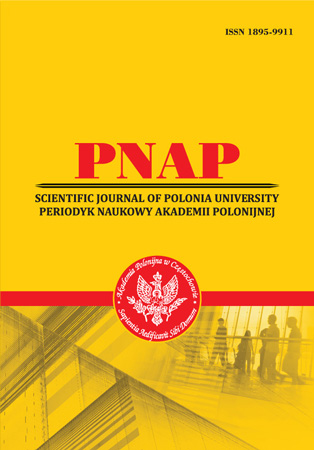TERM-COMBINATION IN THE CONTEXT OF CORPUS-APPLIED TRANSLATION STUDIES
Abstract
This research presents an investigation of term-combination as a corpus-applied translation phenomenon, which constitutes a distinct branch of applied linguistics, merging corpus analysis methods with the study of fundamental translation doctrines. The aim of the study was to examine the theoretical postulates of collocational analysis and paradigmatic transformation of term-combinations in corpus-applied translation studies, determine the quantitative feature of reproducing term-combinations in the corpus of texts, characterize the corpus feature of contextual adequacy, and demonstrate the corpus feature of grammatical concord. The research results demonstrate that the reinforcement of logical determinism of the linguistic phenomenon characterizes an integrated hierarchical approach to the classification of official-business texts, in which collocational relationships between linguistic units are traced, contributing to the expansion of the sphere of terminological combination realization in context. Overall, official-business texts fulfill a dual role: informative and suggestive. The realization of these functions can be both implicit, encoded in the internal form of term-combinations, and explicitly expressed. The pragmatic orientation of official-business texts manifests through corpus-applied translation means. Official-business documents construct the official-business discourse, which we understand as a specific environment of linguistic communication aimed at the realization of lexical-semantic, derivational, grammatical, and stylistic levels. The system of approaches applied in our research constitutes a coherent corpus-applied translation formation, structuring the manner of organization of translation methods directed at the analysis of official-business terminology.
References
2. Bednarek, M. (2021). Using corpus linguistics to study indexicality in Indigenous-authored television drama: Keyword analysis and lexical profiling. p. 1–21. Discourse, Dialogue and Characterisation in TV Series. Granada: Editorial Comares.
3. Fantinuoli, C. (2022). Specialized Corpora from the Web and Term Extraction for Simultaneous Interpreters. Working Papers on the Web as Corpus. p. 173–190. 4. Fellbaum Ch. (2019). How flexible are idioms? A corpus-based study. Linguistics, Vol. 57, No. 4, p. 735–767.
5. Fellbaum, Ch. (2015). The treatment of multi-word units. Oxford Handbook of Lexicography. p. 411–425. Oxford: Oxford University Press.
6. Flusberg, S., Matlock T. & Thibodeau P. (2018). War metaphors in public discourse. Metaphor and Symbol. Vol. 33. p. 1–18. 10.1080/10926488.2018.1407992.
7. Fontenelle, T. (1994). What on earth are collocations? English today: the inter- national review. Vol. 10 (40), No. 4. p. 42–48.
8. Goode, W. (2007). Dictionary of trade policy terms. Cambridge: Cambridge University Press. DOI: 10.1017/CBO9780511910050.
9. Griffin, J. (2008). On human rights. Oxford: Oxford University Press.
10. Jaworska, S. (2017). Corpora and corpus linguistics approaches to studying business language. Handbooks of applied linguistics. p. 583–606. Berlin: De Gruyter. ISBN 9781614514862
11. McKeown, K. R. & Radev D. R. (2000). Collocations. A handbook of natural language processing. p. 507–523.
12. Masamitsu, I. (2005). Quantitative linguistics in Japan. p. 82–95. Berlin–New York: de Gruyter.
13. Picciotto, S. (2011). Regulating global corporate capitalism. Cambridge: Cambridge University Press. DOI:10.1017/ CBO9780511792625.
14. Pystejovsky, J. (2004). Lexical semantic techniques of corpus analysis brandies. p. 413. Oxford: Oxford University Press.
15. Seljan, S. & Gašpar, A. (2012). First steps in term and collocation extraction from English-Croatian corpus. Computational language analysis, computer-assisted translation and e-language learning. p. 149–156. Zagreb: Zavod za informacijske studije.
16. Shakhlo, M. Y. (2022). General Problems of translation of Phraseological Units. Current research journal of philological science, Vol. 3, No. 02, p. 30–35. https://doi.org/10.37547/ philological-crjps-03-02-07
17. Simonnæs, I. & Kristiansen M. (2019). Legal Translation: Current issues and challenges in research, methods and applications. p. 410. Berlin.
Abstract views: 206 PDF Downloads: 131







